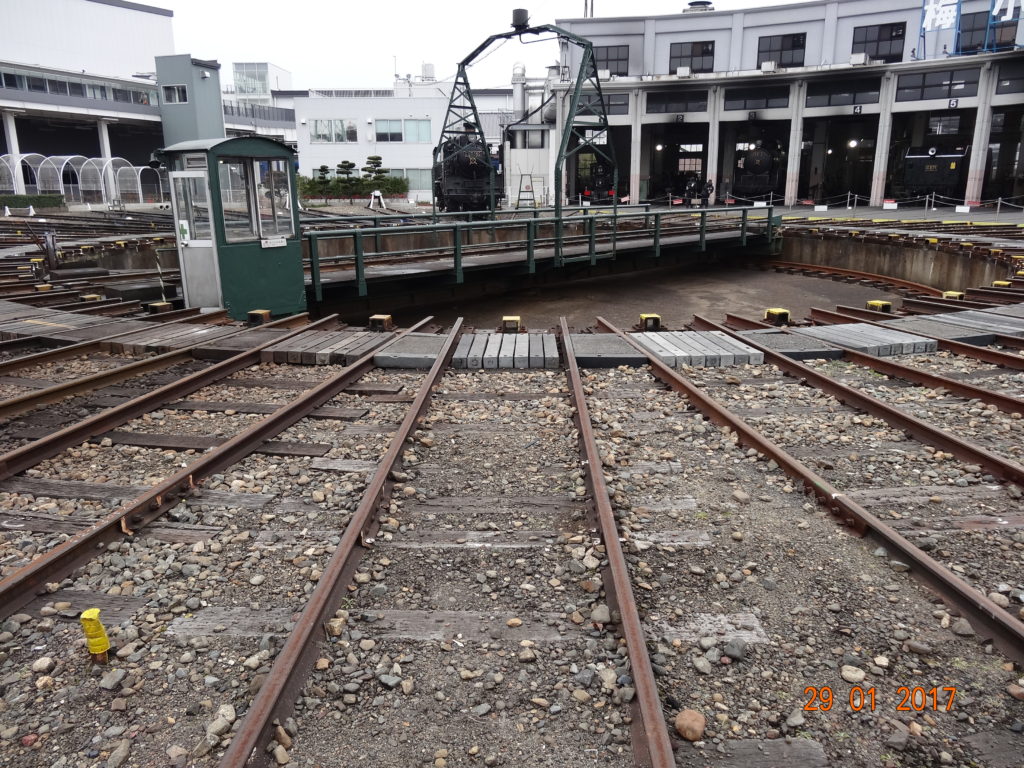Travel period Jan 2017
Where Both Tradition is Valued and Innovation Continues
The Kyoto Railway Museum was opened in April 2016, covering an area of 30,000 square meters on the former site of the Umekoji Steam Locomotive Museum. It is one of Japan’s three great railway museums, alongside JR East’s Railway Museum in Saitama, JR Central’s SCMAGLEV and Railway Park in Nagoya.

The museum exhibits a total of 53 retired trains, from the earliest days of steam to the ultra-modern shinkansen (bullet train). Many of the exhibits have been inherited from two other institutions; The Modern Transportation Museum and Umekoji Steam Locomotive Museum. Both have been closed, allowing their collections to be consolidated at this new museum.
The Kyoto Railway Museum Experience

After we purchased our tickets from a vending machine, we entered through the promenade into the first floor. To the right of the main entrance, in the promenade area, there were more than 50 trains on display. This is an impressive collection, and dates from the early history of Japanese railways in the late 1800s up to today’s Shinkansen.

Inside the main building, on the first floor, we found more trains on display, including a 500 series Shinkansen. Our attention was caught by a bonnet-shaped front car, belonging to the 489 Series, that formed part of the super-express train service that operated in the Hokuriku region.

The exhibition space on the second and third floors of the main building, contained a huge variety of excellent displays of trains, railway uniforms, tools and an abundance of other appurtenances from past eras. It also boasts one of Japan’s largest dioramas, in which miniature trains are controlled single-handedly by a skilled operator, as they traverse the intricately detailed landscape.

Throughout, there were also a number of hands-on engineering displays and information that highlights the technical innovations of Japan’s railways. These are not only fun, but impressive.

Next to the main building lies a roundhouse with a turntable from 1914. It’s still a functioning turntable that changes the direction of the steam locomotives by rotating them. The roundhouse showcases Japan’s largest collection of well-preserved steam locomotives, inherited from Umekoji Steam Locomotive Museum. It houses 20 of the 23 steam trains at the museum, including the antique 7100 Series (manufactured in 1880) and the D52, the largest domestic steam-powered freight train.

Near the roundhouse, there was a boarding platform where you can board a train pulled by the “SL Steam” locomotive. The Steam-go’s two 18-meter-long passenger cars have been newly manufactured to enhance the attractive features of this train. The bodies are colored wine red, in remembrance of the juraku grape, which used to grow locally in Kyoto. Inside each carriage are emblems from retired super-express trains, used to evoke visitors’ memories of these vehicles.

The museum was very impressive. We had no idea we would enjoy the railway museum so much until we visited it. We were amazed to see just how far advanced Japan is compared to other countries when it comes to railways.
Getting to Kyoto Railway Museum
The Kyoto Railway Museum can be reached in a 20 minute walk west of Kyoto Station. Alternatively, it is a short bus ride by bus number 103, 104, 110, 86 or 88. Get off at Kyoto Railway Museum-mae bus stop.
Operating Hours: Thursday to Tuesday from 10:00 – 17:30 (last admission at 17:00) closed on Wednesday (except when Wednesday is a national holiday and during spring and summer school holidays), 30th December to 1st January
Admission Fee: JPY 1,200
Note: The information provided in this post was correct at time of publishing but may change. For final clarification please check with the relevant service.
Also Read

